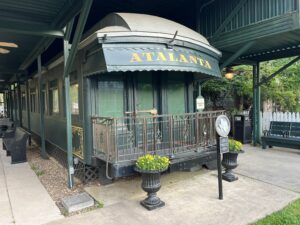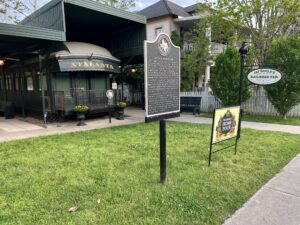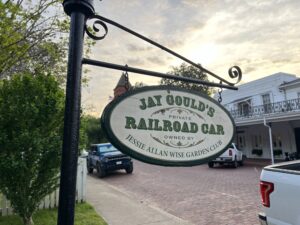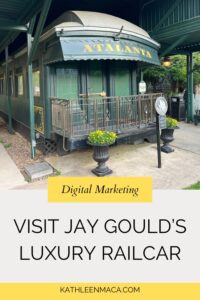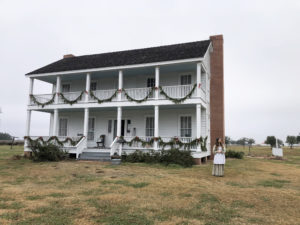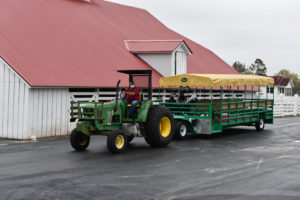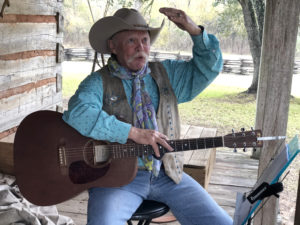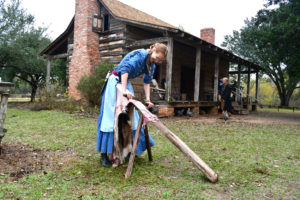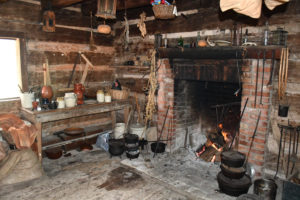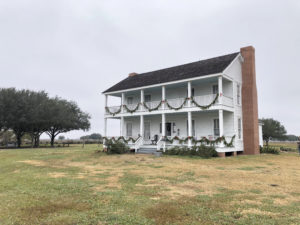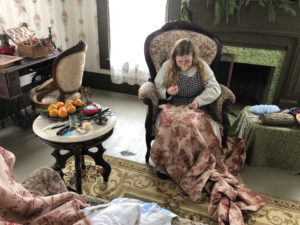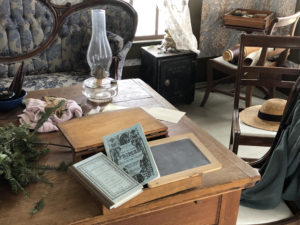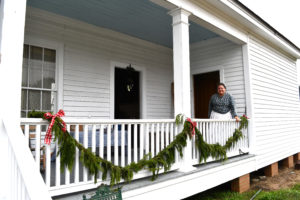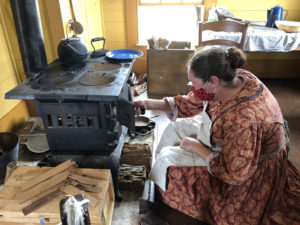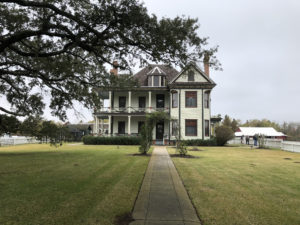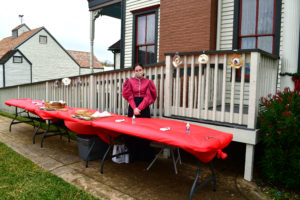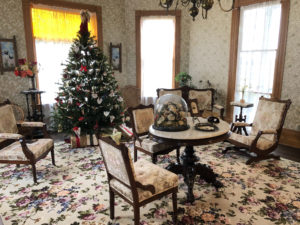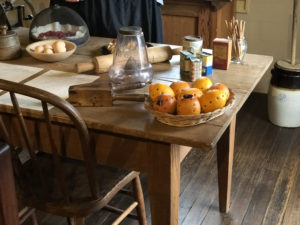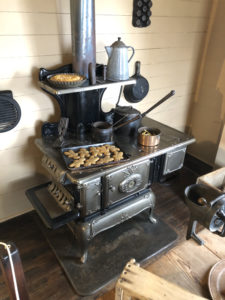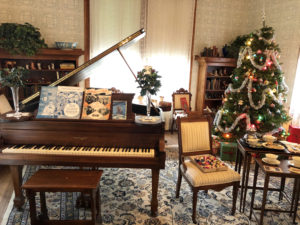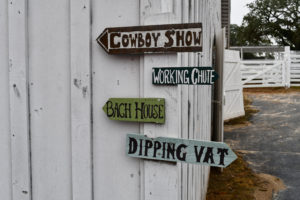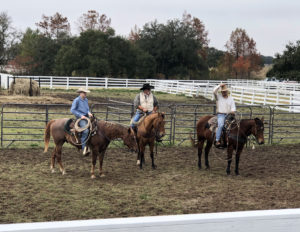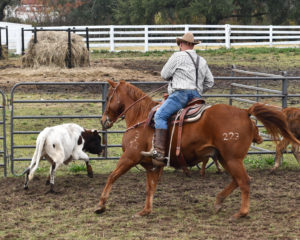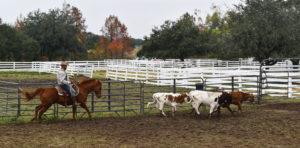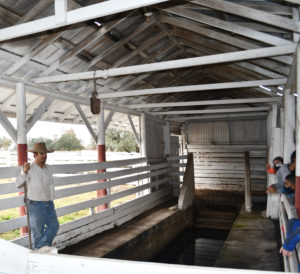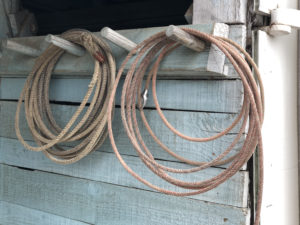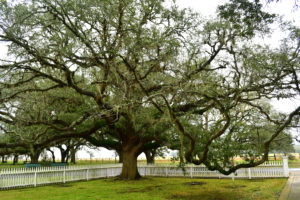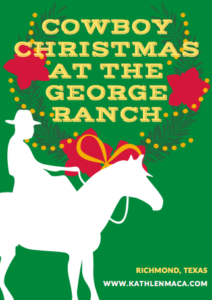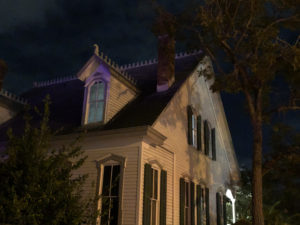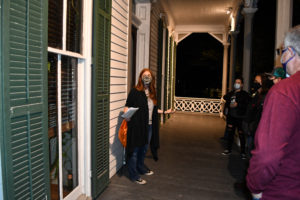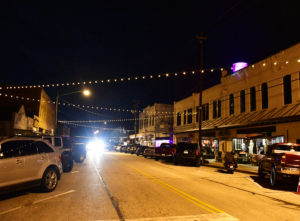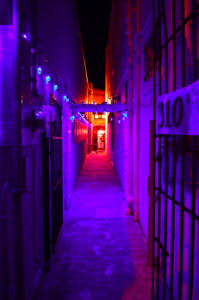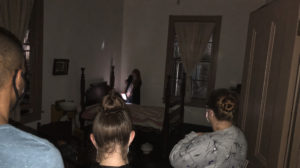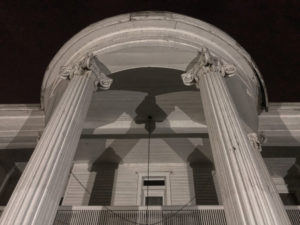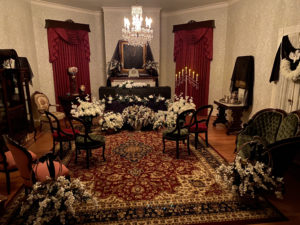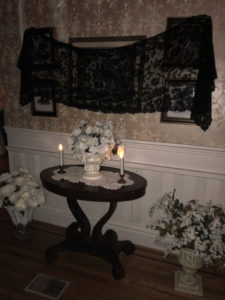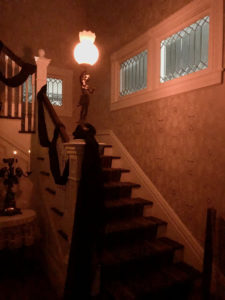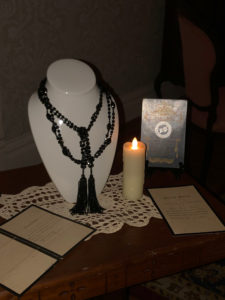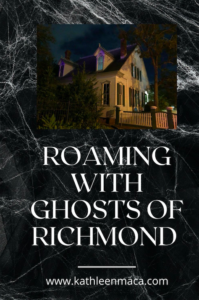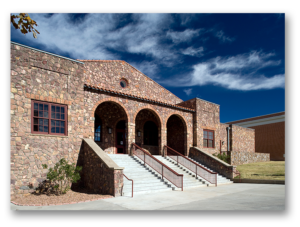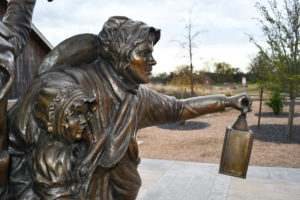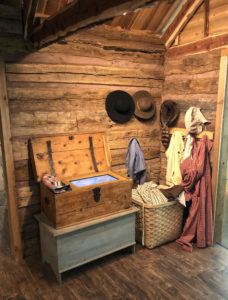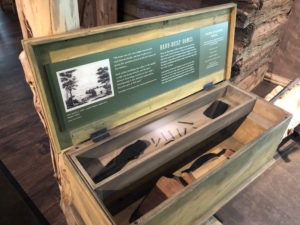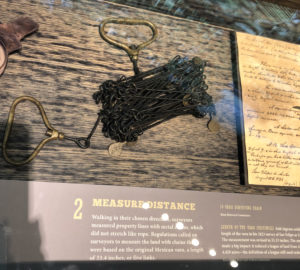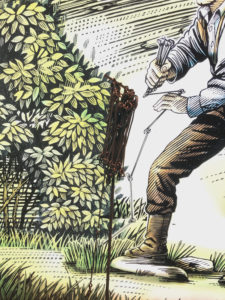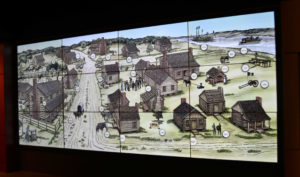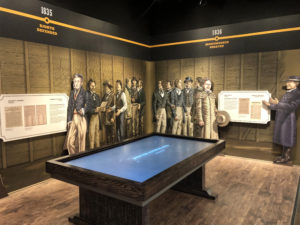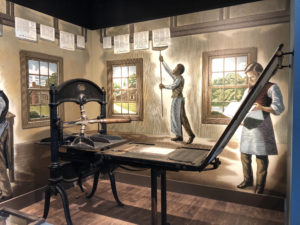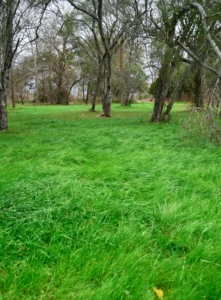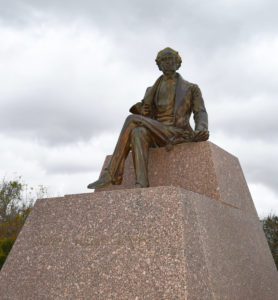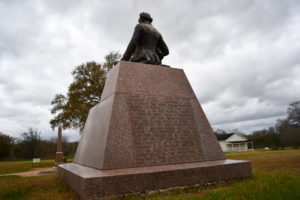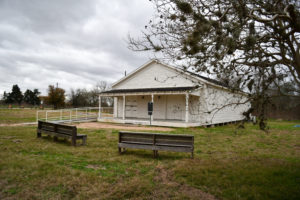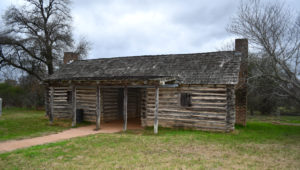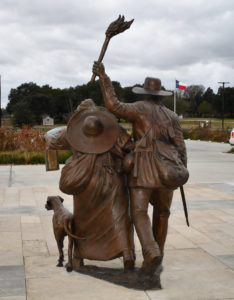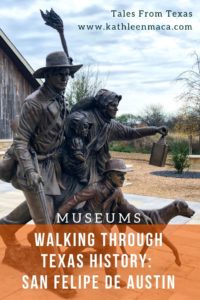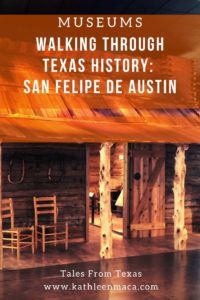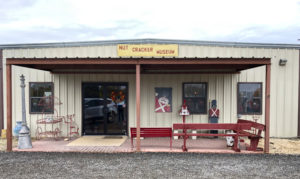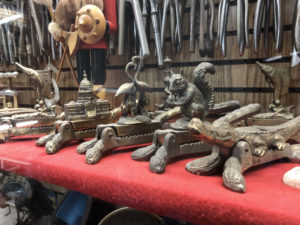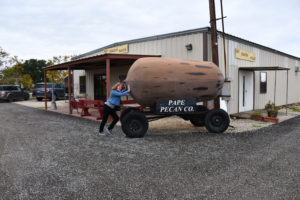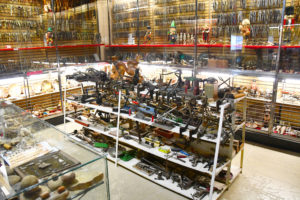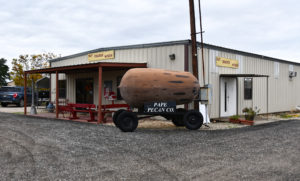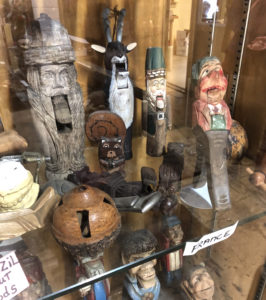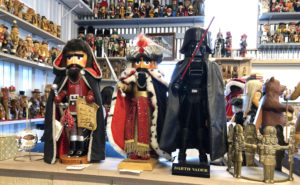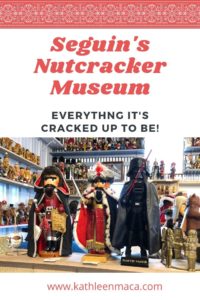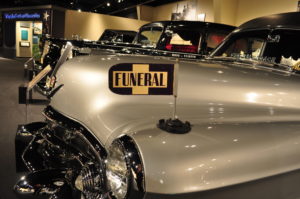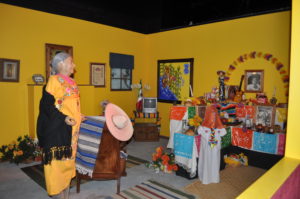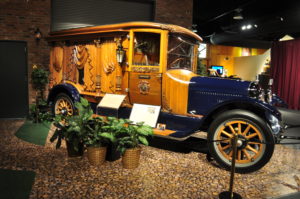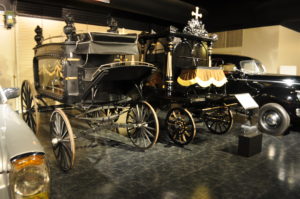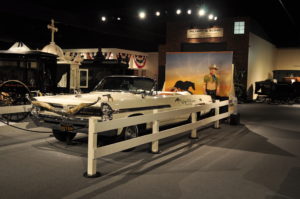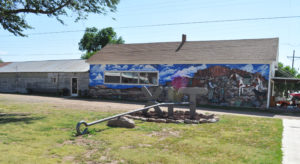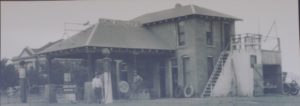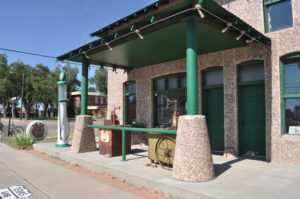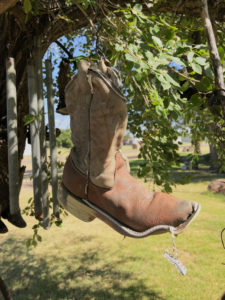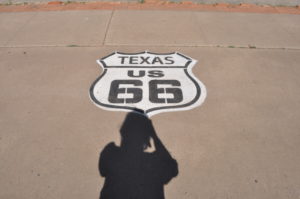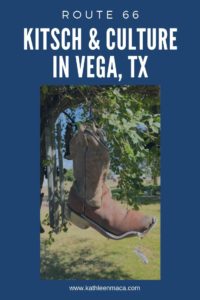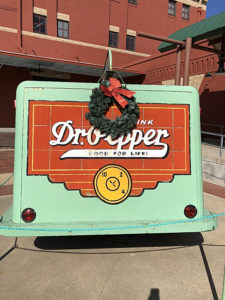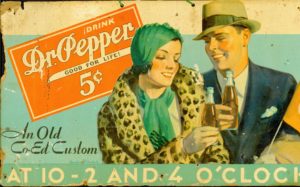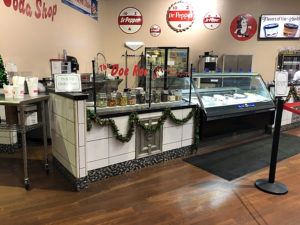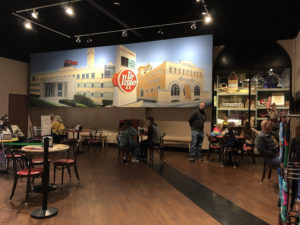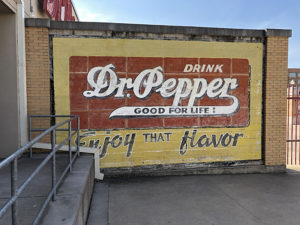Tag: museums
Beaumont’s Giant Hydrant – The Stuff of Doggie Dreams
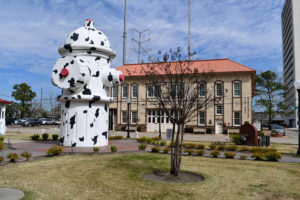
If you travel with your dog, this might be their favorite Texas roadside attraction – a 24-foot, Dalmation-spotted fire hydrant in Beaumont. Sure to make tails wag in anticipation!
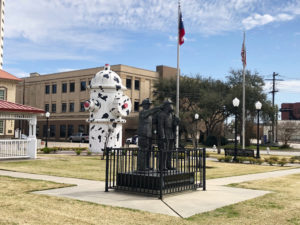 Designed as the World’s Largest Fire Hydrant, the giant fiberglass structure reinforced with 1,000 feet of steel was created at Disneyland by the Walt Disney Company to promotion the 1999 re-release of the animated classic “101 Dalmations.” It weighs an incredible 4,500 pounds and can blast 1,500 gallons of water a minute. Yep – it’s actually a working fire hydrant.
Designed as the World’s Largest Fire Hydrant, the giant fiberglass structure reinforced with 1,000 feet of steel was created at Disneyland by the Walt Disney Company to promotion the 1999 re-release of the animated classic “101 Dalmations.” It weighs an incredible 4,500 pounds and can blast 1,500 gallons of water a minute. Yep – it’s actually a working fire hydrant.
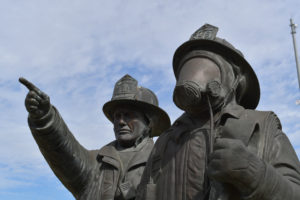 The adorable painted black and white Dalmation pattern is actually copyrighted by Walt Disney. Spots can be serious business!
The adorable painted black and white Dalmation pattern is actually copyrighted by Walt Disney. Spots can be serious business!
But how in the heck did this thing of doggy-dreams end up in Texas? Partially due to the fact that it was provided with a place of honor right outside of the Official Fire Museum of Texas, Beaumont was chosen from 300 U.S. cities to be its permanent home.
Since its installation, another giant hydrant in South Carolina has surpassed its height record by 40 feet. But while that one may now hold the “tallest” designation, Beaumont’s own Disney-esque version is still the World’s Largest Working Fire Hydrant.
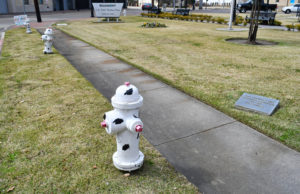 And so it sits, just outside of downtown Beaumont, as a beacon for all Disney fans, dogs and dog lovers. It shares a small park across the street from the Fire Museum with the Firemen’s Memorial and a few small “mini me” spotted hydrants.
And so it sits, just outside of downtown Beaumont, as a beacon for all Disney fans, dogs and dog lovers. It shares a small park across the street from the Fire Museum with the Firemen’s Memorial and a few small “mini me” spotted hydrants.
Visit this unusual attraction for yourself at 219 Main Street in Beaumont. And while you’re there be sure to check out the fascinating collection and displays at the Fire Museum.
Christmas at the George Ranch 2020
Ready to peek into Christmas Past, Texas style? Let me take you on a virtual visit to the George Ranch Historical Park in Richmond where they’ve lassoed a wonderful event to share just that!
The annual Christmas at the Ranch event was a bit different this year due to additional safety protocols, but the staff couldn’t have created a more welcoming and fascinating day for their guests.
Founded in 1824, the George Ranch showcases the four homes of four generations of this Texas family, and this time of year they’re dressed up for the season.
My first stop was at the visitor center, where I was provided with a map of the ranch and demonstration schedule. The park is laid out in a mile long loop (yes, a MILE), and visitors can ride a tractor pulled tram from one stop to the next. But I highly suggest combining riding and walking when weather permits, to enjoy the natural surroundings.
I rode the tram to my first stop, the 1830s Jones Stock Farm dog trot cabin, and was greeted by the volunteers dressed in period costumes. The cabin and buildings are replicas of Henry and Nancy Jones’ homestead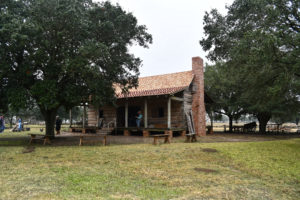 – one of the earliest settlements of Northeast Mexico. Nope, it wasn’t even Texas yet!
– one of the earliest settlements of Northeast Mexico. Nope, it wasn’t even Texas yet!
One gentleman shared the background of the family and information about the cabin, and another charmer played beautiful music on his guitar and told a few tall tales that were impossible to resist.
A young woman had the unenviable, sticky task of demonstrating how to clean a deer hide in a yard populated by adorable hens, but managed to do it with a smile while explaining that when the thin hides were worked until thy were translucent, they could be used to cover the cabin windows during the winter months (since glass wouldn’t have been available).
In the breezeway of the dogtrot a young man worked at weaving on a loom, taking breaks to serve visitors Mexican hot cocoa that was brewing over one of the hearth fires – and was a treat on the chilly day.
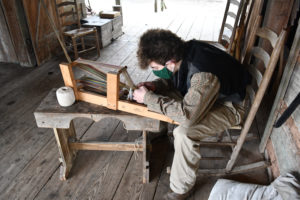
 In the nearby hog pen, one of the volunteers scratched the back of one of the docile 300-pound Berkshire pigs that are part of an initiative to preserve heritage breeds. Seems these fragrant residents are descendants of a rare breed that came to Texas from England in the 1830s. I know people who can’t trace their lineage as well!
In the nearby hog pen, one of the volunteers scratched the back of one of the docile 300-pound Berkshire pigs that are part of an initiative to preserve heritage breeds. Seems these fragrant residents are descendants of a rare breed that came to Texas from England in the 1830s. I know people who can’t trace their lineage as well!
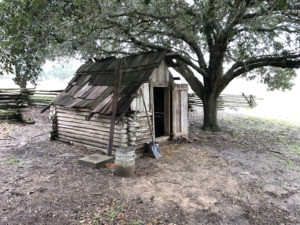 After a quick look at the chicken coop (always interesting to me since gathering the eggs was my job when visiting my grandmother’s farm), smokehouse barn and outdoor kitchen, I worked my way back to the road to hop on the tram again.
After a quick look at the chicken coop (always interesting to me since gathering the eggs was my job when visiting my grandmother’s farm), smokehouse barn and outdoor kitchen, I worked my way back to the road to hop on the tram again.
Next stop: the 1860s Ryon Prairie home – picture perfect with garlands of evergreens draped across the porch rails.
Mary Moore “Polly” Ryon was the oldest of the Jones’ daughters. She inherited th majority of her family’s wealth, and amazingly was on of the largest land holders in the region by age 18! She and her husband William built a cattle ranching empire after the Civil War.
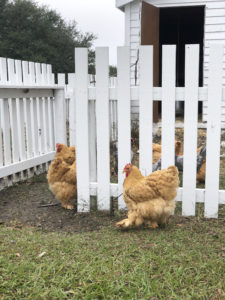
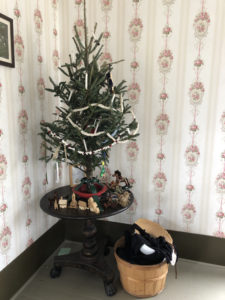 One young woman showed me around the knot garden and chicken coop until it was my turn (social distancing, ya know) to go inside the house.
One young woman showed me around the knot garden and chicken coop until it was my turn (social distancing, ya know) to go inside the house.
Inside two young docents explained the uses of the men’s and women’s parlors, and directed me toward the kitchen where more volunteers were baking cookies for the visitors in a period stove.
I decided to walk the rest of the property rather than ride the tram since it was a beautiful day and I didn’t see any reason to rush.
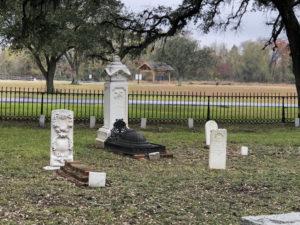 Susan Elizabeth Ryan was Polly’s only surviving child and sole heir of Polly’s estate. She married banker civic leader John Harris Pickens Davis. The Victorian era home sits in a complex that includes a sharecropper’s farm, the family cemetery with graves dating between the 1820s to 1916 and the Oldenberg blacksmith shop. It seemed ironic to me that Polly isn’t in the family cemetery (she’s at Morton Cemetery in Richmond). But the existing monuments are beautiful and well cared for.
Susan Elizabeth Ryan was Polly’s only surviving child and sole heir of Polly’s estate. She married banker civic leader John Harris Pickens Davis. The Victorian era home sits in a complex that includes a sharecropper’s farm, the family cemetery with graves dating between the 1820s to 1916 and the Oldenberg blacksmith shop. It seemed ironic to me that Polly isn’t in the family cemetery (she’s at Morton Cemetery in Richmond). But the existing monuments are beautiful and well cared for. 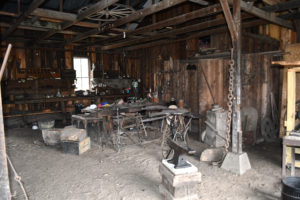
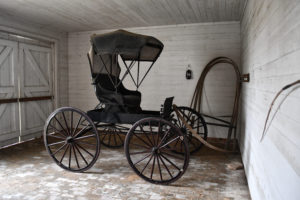 In the blacksmith shop, kids were invited to try their hand at “forging” knives from chunks of clay with rubber mallets.
In the blacksmith shop, kids were invited to try their hand at “forging” knives from chunks of clay with rubber mallets.
In the side yard of the home, a sweet volunteer led visitors in creating Victorian style Christmas ornaments from paper as keepsakes of their visit.
The last home to tour was the 1930s George Ranch House (designed by famous Galveston architect Nicholas Clayton) and complex, where a barbershop quartet was entertaining passersby with Christmas carols.
Mamie George and her husband A.P. were the last descendants of the Henry and Nancy Jones family to oversee the ranching operation. Their influence and support is still seen across the community in libraries, schools, the Houston Livestock Show and Rodeo, a community center and countless other contributions. 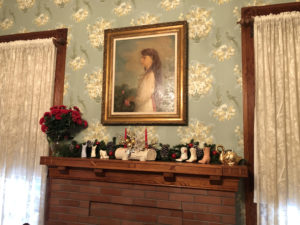
Their home is still decorated with their furnishings, right down to the ornaments on the Christmas tree! I loved Mamie’s collection of ceramic cowboy boots from her travels lined up on the mantle.
Once all of the home tours were checked off of my list, I headed to the arena and barn area for the cattle working demonstrations.
The cowboys demonstrated some basic cutting and lassoing techniques while explaining how and why these things are still down on the working ranch. Afterward, one of the cowboys walked the onlookers over to a dipping vat and related how they were used in the past – and why they aren’t any more (thank heaven!).
Whether you’re looking for a day out by yourself like I was, or for something for the entire family to enjoy together, I highly recommend a visit to the George Ranch. It’s beautiful, fascinating…and you might just pick up a little Texas history along the way.
Roaming with Richmond Ghosts
‘Tis the season for ghostly fun…and boy did we find some in Richmond!
As a cemetery historian and author of a couple of books about cemeteries and ghosts, October is understandably a busy time of the year for me – filled with giving tours and presentations. So it was a special treat last night when my husband and I took time for ourselves to TAKE a ghost tour of the historic district of Richmond, Texas. It’s one I’ve been wanting to see for years, and now I can’t wait to go back with friends next year!
 Richmond is filled with history, which usually – in turn – means that through the years tragedi
Richmond is filled with history, which usually – in turn – means that through the years tragedi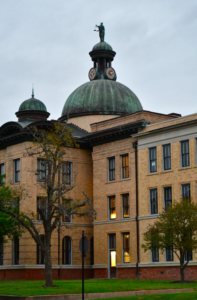 es and unfortunate events have affected the lives of those who lived there. We found out that even the clock tower of the Fort Bend County Courthouse (where we got our marriage license many moons ago) has a story of death and a haunting attached to it.
es and unfortunate events have affected the lives of those who lived there. We found out that even the clock tower of the Fort Bend County Courthouse (where we got our marriage license many moons ago) has a story of death and a haunting attached to it.
We were lucky enough to have Jessica Avery, programs coordinator for the Fort Bend Museum, as our tour guide – assisted by a charming group of other museum employees and volunteers.
One of the things I appreciate about ghost tours organized by historical society groups is that they have a respect for true history as their basis. (Read that as “they don’t just make up a bunch of stories and get their references to history muddled – -I’ve seen that done way too often.) Though the Fort Bend Museum does historical tours of their properties throughout the year so you can learn about the historic aspects of them, their ghost tours focus on the tales and legends associated with the places. So . . . much . . . fun.
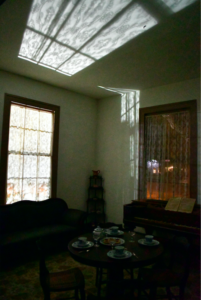 And no, I’m not going to share the stories they worked so hard to gather here. I want you to hear them for yourselves in the spots where they occurred!
And no, I’m not going to share the stories they worked so hard to gather here. I want you to hear them for yourselves in the spots where they occurred! 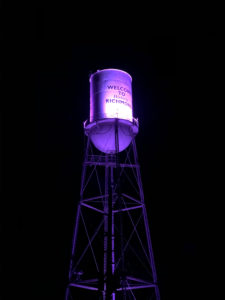
It was an easy-paced walking tour as we followed Jessica through the streets nearby Moore Mansion and into old downtown Rosenberg as she pointed out different sites and shared their stories. Used to documenting with school groups, she has a lovely, clear speaking voice that was easily understandable even over the occasional street noise. The museum staff has visited with local business owners, so they’re able to share their unexplained experiences and sightings as well.
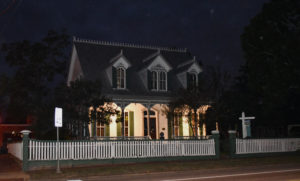 Several charming small buildings that belong to the group such as the McFarlane House are included, and attendees are encouraged to peek inside the windows! Charming by day, certain places with so much past can contain rooms where even the most serious-minded history experts may become so unsettled they have to gather their things and leave when darkness falls.
Several charming small buildings that belong to the group such as the McFarlane House are included, and attendees are encouraged to peek inside the windows! Charming by day, certain places with so much past can contain rooms where even the most serious-minded history experts may become so unsettled they have to gather their things and leave when darkness falls.
One of the properties even has a gravemarker in the front yard. What’s b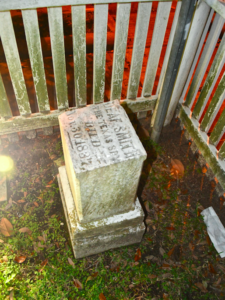 etter is that it belongs to Texas hero Deaf Smith “The Texas Spy!” His name may sound familiar to you if you took Texas history in school. I had no idea such an illustrious person’s commemoration would be found inside the white picket fence of the property. There may even be more unmarked graves beneath the house, which was moved to the property much later.
etter is that it belongs to Texas hero Deaf Smith “The Texas Spy!” His name may sound familiar to you if you took Texas history in school. I had no idea such an illustrious person’s commemoration would be found inside the white picket fence of the property. There may even be more unmarked graves beneath the house, which was moved to the property much later.
Our final stop of the evening was at the fascinating 1883 Moore Mansion, home base for the Fort Bend Museum. And they definitely saved the best for last!
If you haven’t heard it before – but you probably have if you read my blog – funerals “back in the day” were held at home, and the staff had set up an entire Victorian funeral scene in one of the rooms complete with a mounting wreath, coffin, samples of mourning jewelry and announcements, and draped mirrors and pictures. Beautifully done, and very appropriate for the Halloween season.
The house was lit throughout only with battery operated candles and hand held flashlights, which added to the mood. Our guides gave us a tour upstairs and downstairs while telling us some eerily intriguing tales, then let us wander through the large home by ourselves for a bit.
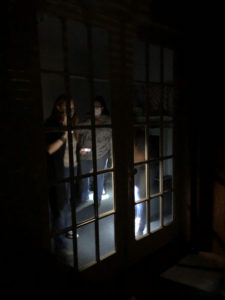
Sign up early – they do sell out. You can choose to do a Halloween tour of the Moore Home or a ghost tour of the area. We chose to do a combo tour of both because . . . who wants to choose?
The Fort Bend Museum has events throughout the year for all ages. You can check the upcoming plans here.
Diggin’ Up Fun at the Museum of the Big Bend
What to do while we’re quarantined? Well, just travel virtually that’s what!
Here’s a link to the instagram visit I had with Matt Walter, Curator of Collections at The Museum of the Big Bend in Alpine, Texas. Just click the link and come along!
Thanks so much, Matt!
O.K, friends – What was your favorite item or exhibit on the tour?
Walking in Their Steps: San Felipe de Austin Historic Site
Happy New Year!
So many of us start off each new year by looking back, so I thought it was only appropriate to begin 2020 by sharing a place that brings us back to the beginning of Texas: San Felipe de Austin State Historic Site.
Open since April 2018 the San Felipe de Austin Museum is simply one of the most beautifully interpreted historical sites I’ve seen, especially considering there is virtually nothing left of the original settlement. Inside, visitors can interact with touch screen displays to learn details about the settlement, and outside they can walk in the steps of settlers and explore the townsite.
Sitting on the bluff of the Brazos River on the actual site of the former colony it honors the spirit of early Texas pioneers.
San Felipe de Austin was established in 1823 by Stephen F. Austin, known as the “Father of Texas,” as a headquarters for his colony in Mexican Texas. The town had four public squares: Commerce, Constitution, Military and Campo Santo Cemetery.
The first area to visit after paying admission in the gift shop/reception area is a small viewing area for a short film that gives an overview of the history of San Felipe de Austin. Interesting and beautifully produced, it puts the history of the site and people who lived here in context as you continue through the property.
Entering the museum space, the first thing you’ll encounter is a replica of a log cabin. Displays like a spinning wheel and dress-up corner give a bit of information about pioneer life, but make sure you stand for a moment in the space and realize that this small cain would often house an entire family.
A corner across from the cabin holds a field desk that actually belonged to Stephen F. Austin, and display cases contain examples surveying equipment that would have been utilized in laying out the colony and surrounding land grants.
Other displays showcase artifacts recovered during archeological excavations that give visitors a peek into the everyday lives of early Texans.
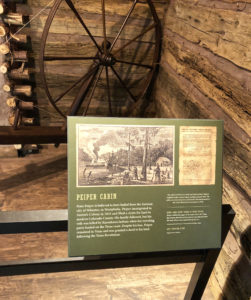
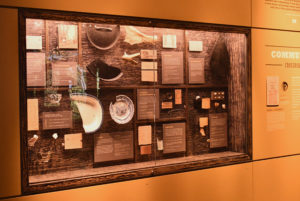 One of my favorite things about the museum is the number of interactive displays. Adults enjoy them, of course, but as a parent and Girl Scout leader who has traveled with children of all ages, I know how these fascinating exhibits can draw people into history through high tech applications.
One of my favorite things about the museum is the number of interactive displays. Adults enjoy them, of course, but as a parent and Girl Scout leader who has traveled with children of all ages, I know how these fascinating exhibits can draw people into history through high tech applications.
Walk up to a lighted, multimedia illustration of the settlement and touch key numbers to learn more about the different buildings (offices, the school, individual homes) and people who once existed there. (And yes, you know that I touched every single one!)
Turn around and walk up to a tabletop display to learn about some of the big decisions the officials of San Felipe de Austin had to make. Once you’ve made a decision about the issue, you can cast your vote, and see the results.
A colonial printing press like one used to print the Texas Gazette, at times renamed the Mexican Citizen, in San Felipe from 1829 to 1832 stands proudly in its own corner, along with a printing plate that . . . yes, really . . . visitors are encouraged to touch.
The display explains the vital role the press played both in the community and in the history of the state:
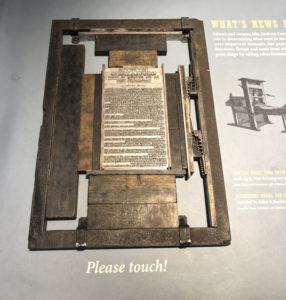 “The first book published in Texas, written by Stephen F. Austin, was printed by the Gazette press in 1829. In 1835, the Telegraph and Texas Register began operating under the guidance of Gail Borden, Jr. and soon became the unofficial voice of the Texas revolution movement. It also printed many other important Texas documents, including the Declaration of Independence.”
“The first book published in Texas, written by Stephen F. Austin, was printed by the Gazette press in 1829. In 1835, the Telegraph and Texas Register began operating under the guidance of Gail Borden, Jr. and soon became the unofficial voice of the Texas revolution movement. It also printed many other important Texas documents, including the Declaration of Independence.”
Impressed? I was, too.
I encourage you to take your time and read the descriptions that accompany seemingly small fragments and objects in cases that line the walls. There are priceless treasures and surprises among them.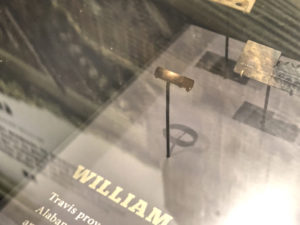
William B. Travis was a town resident before his death at the Alamo, and he sent his famous “Victory or Death” letter from the Alamo to San Felipe. A ring thought to have belonged to him was excavated from his homesite and is now on display.
After exploring inside the museum, it’s time to expand your discoveries by venturing out the side doors, and into the townsite itself.
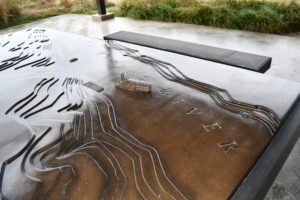 A bronze plat map sits on a platform on a covered patio, providing a frame of reference for how the settlement was laid out on the property. From here visitors can follow a mown path through the mown native grasses to visit specific sites within the former town. San Felipe was one of the most culturally diverse communities of its time in Texas. Farmers, explorers, politicians, enslaved and free people of African ancestry, intertribal delegations of local Indians, cattlemen and businessmen populated the thriving settlement.
A bronze plat map sits on a platform on a covered patio, providing a frame of reference for how the settlement was laid out on the property. From here visitors can follow a mown path through the mown native grasses to visit specific sites within the former town. San Felipe was one of the most culturally diverse communities of its time in Texas. Farmers, explorers, politicians, enslaved and free people of African ancestry, intertribal delegations of local Indians, cattlemen and businessmen populated the thriving settlement.
A tavern, bakery, stores, homestead sites and more await visitors who will quite literally be walking in the footsteps along the same paths these brave citizens did almost two centuries ago.
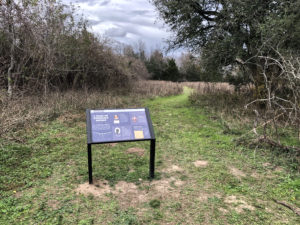
The Texas Revolution caused the demise of San Felipe de Austin, when the residents burned it to the ground during the evacuation known as the “Runaway Scrape” in 1836. After the fall of the Alamo, Mexican General Santa Anna and his forces briefly occupied the ruins of the town just before their defeat at the Battle of San Jacinto.
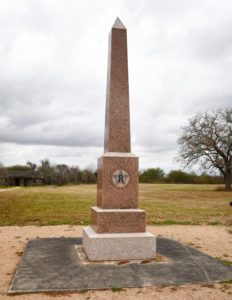
Just across the road from the museum are a few more sites you’ll want to explore. A commemorative obelisk marks the exact spot of Stephen F. Austin’s own cabin – the only home he ever owned in Texas. There is also a stoic bronze statue of the Texas hero, a replica dog trot log cabin, active excavation sites, and the original well for the colony.
.
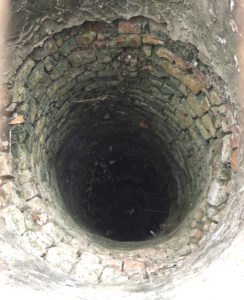
The large white building is the J. J. Josey General Store, built on the townsite in 1847 and in continuous operation for generations before being moved here for preservation.
Visitor parking is available on site at the museum and limited parking is available across the street.
Allow yourself at least 60 to 90 minutes to enjoy the museum exhibits and the grounds, and be sure to wear comfortable walking shoes as the outside trails are unpaved and the ground is somewhat uneven.
San Felipe is just ten minutes east of Sealy, and the museum is open daily from 9 a.m. to 5 p.m. , except for Thanksgiving Day, Christmas Even, Christmas Day, New Year’s Eve and New Year’s Day.
Admission – Adults, $10; Children (5-14), Seniors, Veterans & Austin and Waller County Residents, $5, Family ticket (2 adults and 2 children) $22. For other options and to find out more about he San Felipe de Austin Historic Site, click HERE.
Seguin’s Nutcracker Museum: All It’s Cracked Up to Be
Most people only think of nutcrackers around Christmas but Kenneth Pape, owner of Pape Pecan House in Seguin, spent over 50 years collecting over 8,000 classic, obscure, comical and yes – even naughty – styles of the useful mechanisms.
Since 1961, three generations of the Pape family have been involved in the pecan business. They sell everything from pecan trees to harvesting equipment, but most customers stop into the store for edible treats including several varieties of the freshest pecans you’ve ever tasted, chocolate-covered and candied pecans, pecan oil, and more.
With a family legacy like that, it’s pretty clear how his interest in nutcrackers came about. Pape began collecting nutcrackers in the 1950s during his travels, with many of the classic styles coming from Germany. Over the years, friends and family would send them to him as gifts, and a fellow collector even willed his own gathering to add to Pape’s growing assortment. Estate sales, garage sales, antique stores, flea markets were his resources until her discovered ebay…and the collecting floodgates really opened.
One of the largest assortments of nutcrackers in the world, this nutty collection is housed in a 3,375 square foot museum that spills from the front room of the store to an additional space lined with shelves from floor to ceiling.
Nut picks, nut bowls and vices that would splinter the stubbornest nut; hand held and tables mount styles, of wood, metal, plastic and stone crowd every inch of space in view.
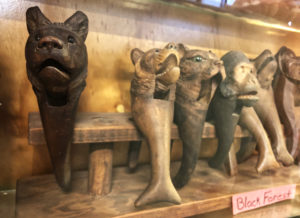
Browse to your heart’s content and discover whimsical depictions of Santa Claus, sports figures, likenesses of politicians, sultans, bishops, snowmen, leprechauns, “Naughty Nellies” (shaped like ladies’ legs), characters, movie characters, traditional soldiers, ballerinas, birds, alligators, rabbits, dogs and oh-so-many squirrels!
Somewhat appropriately for the Texas store, a towering nutcracker cowboy guards a sample table.
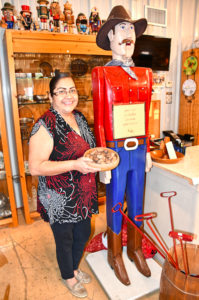
Pieces from the nutcracker collection aren’t for sale, but it’s unlikely you’ll leave without something tasty to take home. But before you drive off, be sure to take a photo with the world’s “Largest Mobile Pecan” just outside. It’s one of two giant pecan displays in town. The other sits on the courthouse lawn in town.
Admission to the museum is free, so “nut-urally” you’ll want to add Pape’s to your list of roadside stops if you’re in the area.
Kenneth Pape unfortunately passed away on October 8 2019. His wife Zee is now sole owner of the operation. Pape’s stepson passed away several months previous, and his daughter now lives out of state so it is uncertain who will take over. Hopefully someone with a love for the area’s nutty heritage will find his or her way to the helm.
But before we hit the road, I’m curious…do you pronounce it:
pee-can
pi-kahn
pa-con
pee-cawn
However you say it – they’re delicious!
Pape Pecan House
5440 S. Highway 123 Bypass, Seguin
Monday – Friday, 8:00 a.m. – 5:00 p.m., Saturday, 9:00 a.m.-1:00 p.m.
Did You Say . . . Funeral Museum?
One of the least known and most fascinating museums in Houston surrounds a topic that not everyone is entirely comfortable discussing – funerals.
The National Museum of Funeral History isn’t only a great idea to visit around Halloween, though. The tasteful curation of a fascinating collection from across generations and cultures will soon have you roaming around wondering why you haven’t visited before.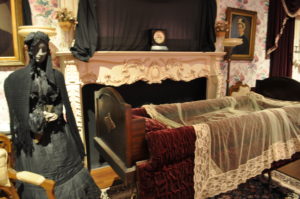
I admit I hadn’t visited the museum since they were in their original, much smaller space so I was wowed by the 30,500 square feet of exhibit space is filled with fifteen permanent displays that explain topics from the lives and deaths of popes, to presidential funerals and the Day of the Dead celebration as well as visiting exhibits.
My favorite room is filled with historical hearses, which will especially amaze car enthusiasts. Rare horse drawn carriages from the 19th century sit beside the actual hearses that carried actress Grace Kelly and U.S. Presidents Ronald Reagan and Gerald R. Ford. There’s even a 1916 Packard funeral bus large enough to hold a coffin, pallbearers and up to 20 mourners.
The museum even has Roy Rogers and Dale Evans parade car…and you have to see it in person to believe it!
Around each corner are unexpected surprises, including a replica of Snow White’s glass coffin and displays of funeral details of the rich and famous.
A collection of fantasy coffins from Ghana, West Africa captures the personalities of the departed. Imagine being laid to rest in a wooden coffin carved to resemble an eagle, a chicken, an airplane or even a Mercedes Benz! They are truly pieces of art.
Other exhibits explain the history of topics like the history of embalming or 19th Century mourning. They’ll open your eyes to a part of history that isn’t often talked about, but can of course be bypassed if you’re with younger ones who you’d rather not have view them.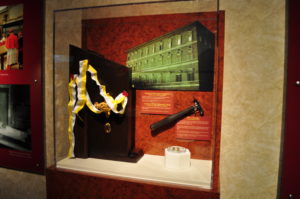
Rest assured though, there is nothing gory or blatant about any of the displays. And yes, there’s a gift shop with a great selection of conversation-starters to commemorate your visit.
Whether you’re looking for something you consider a bit creepy to visit for Halloween, or an unusual museum that your friends probably haven’t even heard of…this is the spot.
Find days, times, and other information to place your visit here: National Museum of Funeral History.
Route 66 Kitsch & Culture in Vega
The next stop on our Texas Route 66 trip was the charming little town of Vega, the county seat of Oldham County. Locals, or “Vegans,” are some of the friendliest folks you’ll find along this trek. The people here and their love of the history of Route 66 are a perfect example of how the road and its travelers can become the fabric of a community.
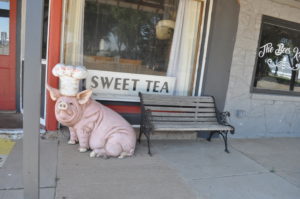 Walking around the courthouse square, it was easy to spot the show stopping mural of a white buffalo on the side of a building at the corner of South Main and West Main – just across from the Bee’s Knees Café (whose “Sweet Tea” sign would have tempted me into sitting on their bench for a spell if they’d only been open!).
Walking around the courthouse square, it was easy to spot the show stopping mural of a white buffalo on the side of a building at the corner of South Main and West Main – just across from the Bee’s Knees Café (whose “Sweet Tea” sign would have tempted me into sitting on their bench for a spell if they’d only been open!).
The massive painting screams Southwest pride and will capture the heart of anyone who loves the area’s history, wildlife and deserts. It is one of four murals painted by talented art partners Joshua Finley and Valerie Doshier in 2014. Tragically, Valerie died of a brain tumor just two years later. What a beautiful legacy of public art she left for passersby to enjoy for years to come.
The children’s book character of Cheeky Maneeky whose stories she had outlined before her passing were later brought to life by her mother D’Ann Swain’s writing and Finley’s illustrations.
Another of the duos’ murals appears on the side of a 100+-year old building at 1005 Coke Street that used to serve as the town’s lumberyard. Expanded a few years ago, it now houses the Milburn-Price Culture Museum that displays memorabilia from around Oldham County including a 1926 Model T affectionately named “Tin Lizzy.” (But I’ll say a bit more about her later.)
The mural at this site depicts the famed XIT Ranch, whose history will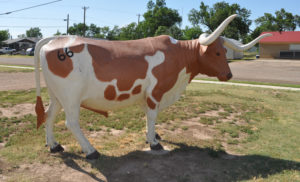 be at least vaguely familiar to anyone raised in the state an subjected to local history books. The Panhandle ranch encompassed a mere three million acres (yes, really!) and was conceived in 1879 to fund a new state capital building. At its peak, it raised 150,000 head of cattle, represented by the large longhorn statue who,…ahem…has a “66” brand instead of an “XIT.” The last of the cattle were sold in 1912.
be at least vaguely familiar to anyone raised in the state an subjected to local history books. The Panhandle ranch encompassed a mere three million acres (yes, really!) and was conceived in 1879 to fund a new state capital building. At its peak, it raised 150,000 head of cattle, represented by the large longhorn statue who,…ahem…has a “66” brand instead of an “XIT.” The last of the cattle were sold in 1912.
What’s most likely to catch yo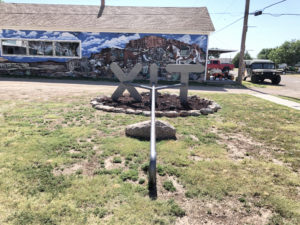 ur eye as you approach the building is the world’s largest branding iron laying on the ground beside the parking area. The XIT iron, made by Greg Conn, was designed so that visitors who drove into the lot at night could cast an immense “XIT” shadow brand onto the side of the building with their headlights. It’s certainly impressive even if you only visit during the day.
ur eye as you approach the building is the world’s largest branding iron laying on the ground beside the parking area. The XIT iron, made by Greg Conn, was designed so that visitors who drove into the lot at night could cast an immense “XIT” shadow brand onto the side of the building with their headlights. It’s certainly impressive even if you only visit during the day.
There are countless vintage gas stations in every stage of repair and disrepair along the route, but the restoration on North Main Street (Coke Street) is sure to make visitors smile.
Colonel James T. Owen opened the “Hi-Way” Magnolia station in 1924 on what was then the Ozark Trail, a partially bricked and partially dirt road. It was only the second service station built in Vega. Owen was an important figure among highway boosters rallying to have Vega as part of the upcoming Route 66.
Edward and Cora Wilson leased the station from Owen just a couple of years after it was built. The Wilsons lived above the station until 1930, in two cozy rooms with one sink. They had to go downstairs to access the bathroom. Can you imagine? Right on Main Street.
After the Wilsons, a string of businessmen leased the property including E. B. Cooke and A. B. Landrum. One operator, Kenneth R. Lloyd, claims to have actually married his wife at the small station before moving upstairs to live.
The station went back under family control when Owen’s son Austin took over the operation in 1933, and entered into a lease with Phillips 66 Petroleum which charged him one cent per gallon of gas sold. The average price of gas was 18 cents per gallon, so that was a pretty good profit!
By 1937, the year J. T. Owen passed away, Route 66 was paved through Vega just south of the station.
Vega’s Magnolia station shut down its pumps in 1953. From 1953 to 1965 the building was home to Slatz Barbershop.
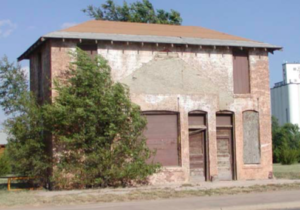
The service station remained vacant for decades, until Vegans rallied to restore it. The before and after photos are pretty impressive, don’t you think?
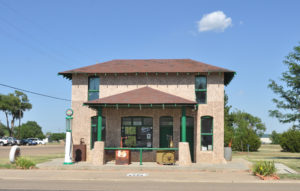 Restoration was completed in August of 2004, and now the station contains mementos of its previous life. The museum is open on special days or by appointment, but you can glimpse many of its contents through the large windows. A glass-globed pump and blue oil pump sit out front.
Restoration was completed in August of 2004, and now the station contains mementos of its previous life. The museum is open on special days or by appointment, but you can glimpse many of its contents through the large windows. A glass-globed pump and blue oil pump sit out front.
If you’re into the more “kitschy” finds along Route 66, it’s hard to beat Dot’s Mini Museum on North 12thStreet. Dot Leavitt’s family ran a refrigerated storage facility named the Vega Zero Lockers. For y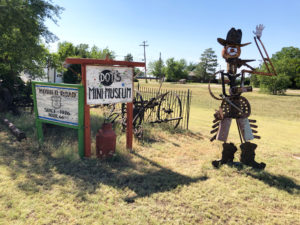 ears they provided services to locals and travelers along the Mother Road, including “Jugs Iced Free.” Sounds like a pretty good deal, considering most cars didn’t have air conditioning! It was also the only place to buy ice on Route 66 between Amarillo and Tucumcari.
ears they provided services to locals and travelers along the Mother Road, including “Jugs Iced Free.” Sounds like a pretty good deal, considering most cars didn’t have air conditioning! It was also the only place to buy ice on Route 66 between Amarillo and Tucumcari.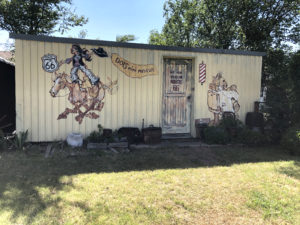
Determined to share reminders of the era after the interstate passed Vega by, Dot began an informal collection of Route 66 artifacts and memorabilia, which turned into her “mini museum” in 1963.
Known for her sweet and chatty nature, Dot became instant friends with all who stopped by to learn more about her unlikely treasures. She is said to be the inspiration (along with Lucille Hammons from Hydro, Oklahoma) for the character of “Tin Lizzie” in the Disney/Pixar movie ‘Cars.’ (See? I told you that “Tin Lizzie would come up again!) The character, voiced by Galveston native Katherine Helmond, owned the Radiator Springs Curio Shop and was the oldest auto in town.
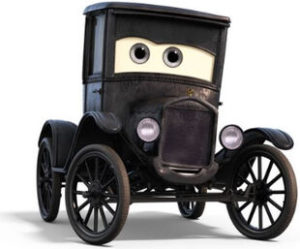
Dot passed away in 2006 at the age of 89, and the collection is in the care of her daughter, Betty Carpenter.
If you’re lucky eno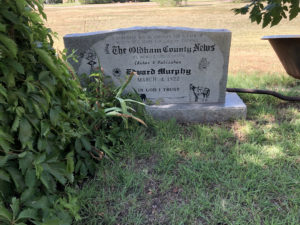 ugh to run into Betty on the property, she’ll show you around. There wasn’t a sole in sight on the hot afternoon of our arrival, so we satisfied ourselves by taking some photos of Dot’s whimsical outdoor collections.
ugh to run into Betty on the property, she’ll show you around. There wasn’t a sole in sight on the hot afternoon of our arrival, so we satisfied ourselves by taking some photos of Dot’s whimsical outdoor collections.
There’s quite a variety to see, including a gravestone for a newspaper that no longer exists, a waving cowboy made of reclaimed metal parts, signs with humorous bits of advice, and…my very favorite…the cowboy boot tree.
 The living tree, decorated with discarded boots of all shapes and styles, actually gets more fascinating the longer you look at it. Taking in the details, you’ll find “well-loved” boots weathering to the point of stitching unraveling, sole nails protruding and heels expanding like the “grow capsules” my daughter used to play with that expand into interesting shapes when you drop them into water. It’s definitely a no-place-but-Texas kind of thing.
The living tree, decorated with discarded boots of all shapes and styles, actually gets more fascinating the longer you look at it. Taking in the details, you’ll find “well-loved” boots weathering to the point of stitching unraveling, sole nails protruding and heels expanding like the “grow capsules” my daughter used to play with that expand into interesting shapes when you drop them into water. It’s definitely a no-place-but-Texas kind of thing.
The yard of this diminutive museum alone is worth pulling into the town of Vega.
If you’re into staying in “rooms with a past,” you’ll definitely want to check out the historic Vega Motel that opened as Vega Court in 1947. Listed on the National Register of Historic Places, it’s one of t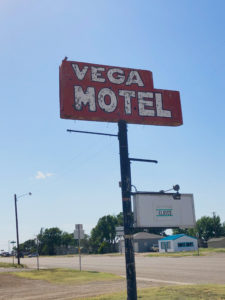 he last remaining tourist courts on the Texas stretch of 66. The Lucky Horseshoe “residence” at the Vega Motel recently opened as an accommodation option for road weary travelers, with enough room for the entire family. Here’s the link. (If you haven’t ever stayed in an Airbnb before, this code will get you $40 off your first booking!)
he last remaining tourist courts on the Texas stretch of 66. The Lucky Horseshoe “residence” at the Vega Motel recently opened as an accommodation option for road weary travelers, with enough room for the entire family. Here’s the link. (If you haven’t ever stayed in an Airbnb before, this code will get you $40 off your first booking!)
There’s even a barber shop on the property, so if you’re in need of a trim after getting windblown on the road…you’re in luck. The rest of the motel is currently undergoing renovations, so I’m looking forward to heading back that way to check on the progress!
The last thing I wanted to search for before 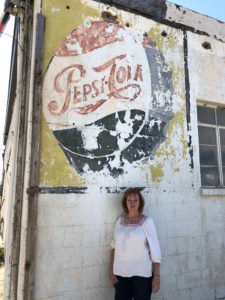 we had to move on down the road was this wonderfully weathered Pepsi-Cola sign…and I feel lucky have have found it.! If you’re in the area and want to see this beauty for yourself, it’s on the original Route 66 between 14th and 15th Streets. And yes, those of you who know me well know that I’m a Dr. Pepper girl through and through, but who could resist this beautifully hand-painted relic?
we had to move on down the road was this wonderfully weathered Pepsi-Cola sign…and I feel lucky have have found it.! If you’re in the area and want to see this beauty for yourself, it’s on the original Route 66 between 14th and 15th Streets. And yes, those of you who know me well know that I’m a Dr. Pepper girl through and through, but who could resist this beautifully hand-painted relic?
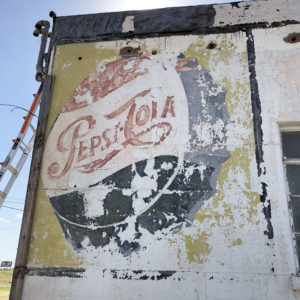 The building also had “ghost signs” advertising “ice” (which would have been welcome in the heat!) and “Cafe.”
The building also had “ghost signs” advertising “ice” (which would have been welcome in the heat!) and “Cafe.” 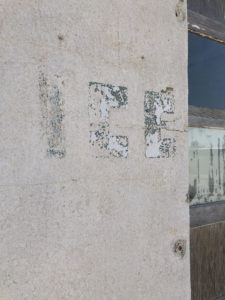
Just in case you’re interested, Oldham Country has the longest stretch of Route 66 stencils painted on the roadbed, at ever other mile marker beginning east of Wildorado (don’t-cha just love that name?) all the way to the west of Adrian. And though I don’t advise sitting on the road for a photo opportunity, there are a surprising number of places on the original Route 66 alignment that you’d be hard-pressed to spot an on-coming car. I settled for snapping my shadow rather than taking a chance. Just sayin’.
Related stories:
Getting Our Kicks on Route 66
Glenrio Ghost Town: Exit 0
Stories Along the Road
A Hero on Route 66
Adrian – Midpoint of Route 66
The Bent Door Cafe’s Quirky Origin
Calling Dr Pepper
It’s my biggest weakness…Diet Dr. Pepper. Guess that’s part of what makes me a true Texan. The same goes for my sister.
One of the sites that sends heart emojis through my brain when I’m on the road is spotting a Sonic Drive-in, where I can order a Route 44 (yep, 44 ounces!) Diet Dr. Pepper with vanilla. Oh…my…goodness. Especially since I don’t drink coffee, these caffeine boosters really come in handy!
So when my sister and I were in Waco recently, of course we HAD to visit the Dr. Pepper Museum.
We were pleasantly surprised by how interesting and large it is.
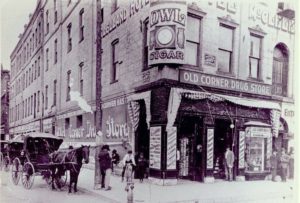
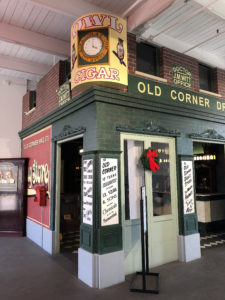
The drink itself originated at Morrison’s Old Corner Drugstore, which is represented with a charming reproduced facade at the museum. Go inside and you can hear an automaton of Charles Alderton talk about how he invented the beverage through a series of experiments with fruit syrup mixtures in 1885.
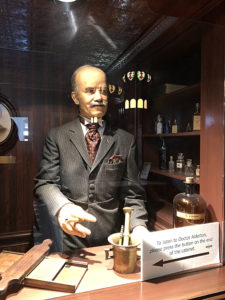
He dubbed his creation “Dr. Pepper” (the period was dropped in the 50s). In 1891 the bottling operation was founded that later became the Dr Pepper Company.
Once the drink was introduced to a larger audience at the 1904 World’s Fair, it’s popularity spread like wildfire.
During the 1920s and 30s researchers discovered that sugar provided energy and that the average person experiences energy “letdowns” during the day at 10:3 0 a.m., 2:30 p.m. and 4:30 p.m. It was suggested that drinking a Dr. Pepper (no sugar shortage there!) at 10, 2 and 4 would avoid that. This was incorporated into an advertising campaigns for about 20 years, and helps to date any old advertising (including outdoor murals) that includes “10, 2 and 4.”
0 a.m., 2:30 p.m. and 4:30 p.m. It was suggested that drinking a Dr. Pepper (no sugar shortage there!) at 10, 2 and 4 would avoid that. This was incorporated into an advertising campaigns for about 20 years, and helps to date any old advertising (including outdoor murals) that includes “10, 2 and 4.”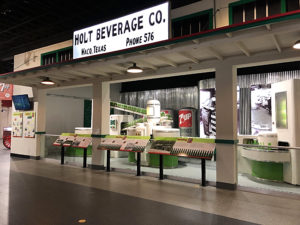
There’s so much more history to see at the museum including a working bottling line and a dizzying peek into the 27 1/2 foot deep, ori ginal artesian well that provided water for the product.
ginal artesian well that provided water for the product.
There are also period delivery trucks, promotional toys and even a miniature town diora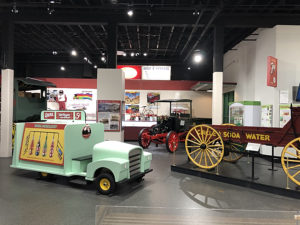 ma that will steal your heart.
ma that will steal your heart.
This is one of those rare tourist attractions that would be great to see with multiple generations of your family, as they can all find things that will jog memories and bring a smile.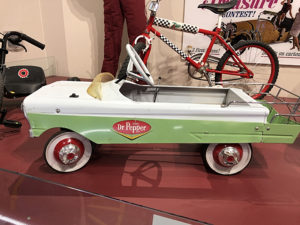
And at the end of your visit you can treat yourself to something from the on site ice cream parlor and soda fountain!
Operating soda fountain and ice cream parlor

